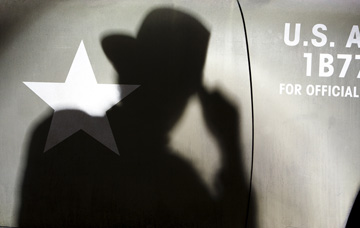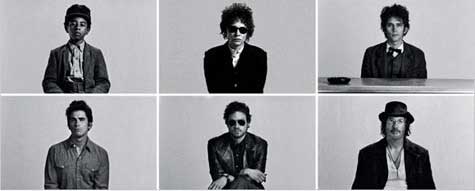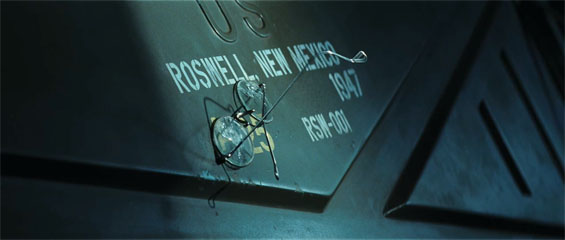
Loath am I to be the bearer of bad tidings on this front, but it must be said: Upon walking out of the midnight show of
Steven Spielberg’s Indiana Jones and the Kingdom of the Crystal Skull last night, I found myself grappling with a condition that can only be described as “Prequelitis.” To wit, I felt almost exactly as I did after emerging from
The Phantom Menace in 1999, struggling to rectify the mental disconnect between my strong desire to like the movie I just witnessed and the undeniable sense that said film had been lousily written, if not thoroughly mediocre. As such, I wrote up a pretty negative review of
Crystal Skull here this morning, before deciding that, even though I’d calibrated my expectations to the floor going in, perhaps I’d
still carried too much baggage into the film with me. (After all, while
Raiders of the Lost Ark is an enduring masterpiece, its strength tends to make me forget how campy
Last Crusade turned out to be, and how borderline-unwatchable
Temple of Doom seems today.) And so, in between packing up the apartment this afternoon, I decided to give the film one more shot, unburdened by any expectation whatsoever. I figured, after all these years, I owed Dr. Jones that much.
Well, I enjoyed the film slightly more the second time, particularly its first forty-five minutes. And in both viewings, I found the movie a decently diverting thrill ride, with a few very brief glimpses of real Indy grandeur. Let me be clear: the film isn’t Attack of the Clones atrocious — It’s more on the order of a cable-grade Indy knockoff like National Treasure (and, in fact, it’s probably better than Temple of Doom, although I guess that jury’s still out.) But, given its two decades of gestation, Indiana Jones and the Kingdom of the Crystal Skull still seems a remarkably shoddy enterprise, despite yeoman’s work by Harrison Ford, Cate Blanchett, Shia La Boeuf, and the rest of the cast. The main problem is neither the years nor the mileage: It’s the sloppy, patchwork script. (The screenplay is attributed to David Koepp, but it went through the hands of a slew of writers first, and definitely bears the fingerprints of George Lucas.) Overstuffed with midichlorian-style exposition, random acts of slapstick, and useless, one-note characters, Crystal Skull makes very little sense, even if you manage to make allowances for the arbitrary, Looney Tunes physics that now seem to hold sway over the Indyverse. As it is, Crystal Skull seems so haphazardly scripted at times that one wonders why they greenlighted this version of the film at all…unless, of course, Spielberg and Lucas just figured we’d all go see the movie regardless. (Alas, they’re probably right. I mean, I’m mostly hating on it and I saw it twice.)
At any rate, Indiana Jones and the Kingdom of the Crystal Skull begins in Nevada, 1957, with a clever fade-in to a US Army convoy, an impromptu American Graffiti-style drag race (Old Lucas), and the first of three reaction shots by CGI prairie dogs (Sigh…New Lucas). Said convoy approaches a checkpoint, guns down everyone in sight (They’re Russkies!), and stops outside a top-secret military hangar, a.k.a. Area 51. These Soviet ne’er-do-wells then pop out of a trunk two captives they grabbed in Mexico: The one and only Henry Jones, Jr., Ph.D. (Ford, with a long-missing gleam in his eye) and his current sidekick, Mac (Ray Winstone, woefully underused). After the requisite introductions are made, Jones and Mac meet the Lady in Charge, the black-bobbed, blue-suited psychic scientist Irina Spalko (Cate Blanchett, playing it broad…but, really, how else does one play a Ukrainian dominatrix?), who demands that they help her find a hypermagnetic treasure somewhere in the hangar. This box is found, shenanigans ensue, Indy pulls off easily his most death-defying stunt yet (I have to admit, I kinda dug it)…and we’re at Marshall College, where Professor Jones has now found himself on the wrong end of the blacklist. (In 1957?) Just as he’s looking to go adjunct in Leipzig, Indy meets a young greaser-adventurer, Mutt Williams (Shia LaBoeuf, fine), who says that both his father-figure (and Indy’s old friend) Prof. Oxley (John Hurt) and his mother Mary (guess) have gone missing in Peru. What’s more, it all seems to have something to do with a mysterious Crystal Skull…
So far, so good. Not only do Ford and LaBoeuf have a nice, easy rapport, but Ford seems like he’s shown up to play for the first time since, I dunno, Air Force One? One reason why Indy 4 is — and will likely remain — more satisfying than the Star Wars prequels is that this is in fact the “real” Indiana Jones here (and he even gets to channel Han Solo at one point.) Watching Ford reawaken his long-dormant scoundrel edge is a kick in and of itself, and he has a few fun, iconic moments here. (See, for example, Atomic Age Indy in the early going. The second-act quicksand scene is a poorly-scripted non-sequitur, but Ford almost sells it, and I love the way he lights up so goofily when you-know-who emerges.) But, while Blanchett is both good pulpy fun and very easy on the eyes as Agent Spalko, the rest of the cast suffers mightily with too little to do. Jim Broadbent does passable, if unnecessary work as the Ghost of Marcus Brody, I suppose. But Ray Winstone (a.k.a. Sallah meets Elsa) and John Hurt (the voice of the Maguffin) in particular are given thankless, underwritten parts, and both are too good at what they do to be wasted as plot devices, as they are here.
Underwritten characters are only part of the problem. Another aggravating fault of Crystal Skull is that it compels the audience to forsake the reasonable suspension of disbelief that has usually undergirded the series and instead treat the movie like a full-fledged cartoon. Now, obviously, there are elements in the earlier films, even in the estimable Raiders, that fly in the face of established reality. (One of the quintessential fanboy conundrums, akin to “Why didn’t Frodo just fly an eagle to Mordor?,” is “How the heck did Indy survive that ride on the Nazi sub?” And Temple of Doom in particular is rife with goofiness.) Still, Crystal Skull strains credulity time and time again. I can forgive the end of the opening scene, even if it’s arguably the (second-)dumbest moment in the movie, just because it is particularly fun (and, as I said, it’s capped with a great money shot.) I’ll even give the two-car jungle swordfight a pass, as I suppose it’s in the tradition of Errol Flynn and the old-school serials. But that rubber-banding tree? “Three times, it goes down“? And, don’t even get me started on the ghastly trainwreck of the senses that is Tarzan Mutt.
Even if you’re willing to roll with the Wile E. Coyote/Road Runner rules Crystal Skull lives by (as I tried to the second time), the script is chock-full of continuity errors and moments that irritatingly don’t make any sense. [Spoilers] Why doesn’t Indy know Spalko’s name or identity when being debriefed, when he just called her out in the previous scene? If KGB are stalking Indy at work, wouldn’t they also stake out his home? Who or what are the native folk protecting the crypt and temple? (If they’re living, why do they all pop out of the walls at once? If they’re dead, why are they affected by poisons and machine guns?) What kind of “help” would Indy expect “the Ox” to get? Doesn’t Indy carry a whip for situations exactly like quicksand? What causes this film’s creepy-crawlies to go their collective separate way? How can Indy or anyone else not notice the transponders? How would the baddies be able to follow Indy et al past the disappearing staircase-and-spike trap? Nobody’s ever noticed this gimongous Amazonian basin of temples from the air? One or two minor quibbles are simply grounds for fanboy nitpicks, sure. But the lazy scriptwriting here is off-putting and distracting in its sloppiness, particularly when you factor in all the Basil Expositioning we have to sit through in the middle going.
One reason Crystal Skull seems so disappointing, I think, is that most of its best moments occur in the first hour, while all of these streams of lousiness I’ve just listed converge with a vengeance in the last twenty-five minutes or so. Everything after the nod to The Naked Jungle (and the beside-the-prop-plane fight in Raiders) is silly to the point of being near unwatchable, as Indy and his four sidekicks (think Team Indy Power Rangers) wander around the temple talking about watching stuff happen. I don’t begrudge Lucas and Spielberg’s turn toward 50’s pulp sci-fi here — in fact, I think that was a very clever way of rejuvenating the series — and I think the final reveal might’ve worked really well. (Granted, it’s not much of a reveal — They’ve been toting around that damn skull for 90 minutes.) But the incoherence of Crystal Skull‘s last act only underscores how much more work needed to be done before this pic ever got filmed. Even by the laxest of standards I accorded this movie the second time around, the final act is an unsatisfying mess, right down to its last few moments.
So, did I hate this fourth installment? No, I wouldn’t say that. Even the first time ’round, I usually had a smile on my face throughout. Crystal Skull has its moments here and there and, like I said, it’s no worse than one of the Mummy sequels. If anything, I’d say it’s Mostly Harmless. But, even after the humbling experience of the prequels, and even after lowering my expectations to suit both my and the franchise’s advanced age, I still find I expected more from Kingdom of the Crystal Skull than what we have here: namely, a dopey-but-diverting, nostalgia-heavy advertisement for a forthcoming thrill park ride. Spielberg, Lucas, and Ford haven’t embarrassed their franchise here, I guess. But — thanks mostly to the poorly-conceived script, they sadly haven’t contributed much of import either.



